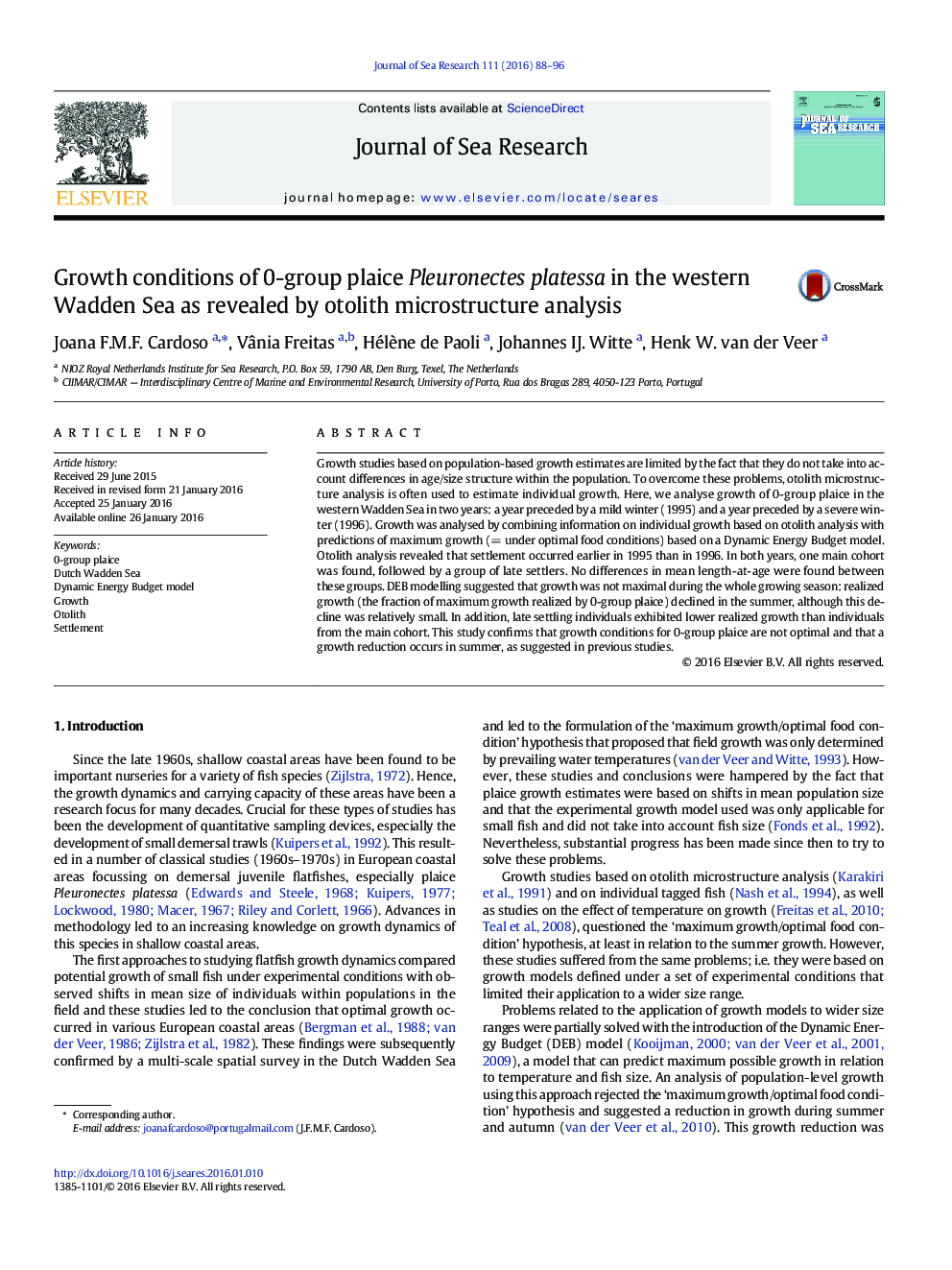| Article ID | Journal | Published Year | Pages | File Type |
|---|---|---|---|---|
| 4549509 | Journal of Sea Research | 2016 | 9 Pages |
•Individual growth study of 0-group plaice based on otolith analysis and DEB modelling.•Growth and settlement time differed between years with different temperature patterns.•DEB modelling suggested a decline in growth during the summer.•Growth decline was not related to fish size.
Growth studies based on population-based growth estimates are limited by the fact that they do not take into account differences in age/size structure within the population. To overcome these problems, otolith microstructure analysis is often used to estimate individual growth. Here, we analyse growth of 0-group plaice in the western Wadden Sea in two years: a year preceded by a mild winter (1995) and a year preceded by a severe winter (1996). Growth was analysed by combining information on individual growth based on otolith analysis with predictions of maximum growth (= under optimal food conditions) based on a Dynamic Energy Budget model. Otolith analysis revealed that settlement occurred earlier in 1995 than in 1996. In both years, one main cohort was found, followed by a group of late settlers. No differences in mean length-at-age were found between these groups. DEB modelling suggested that growth was not maximal during the whole growing season: realized growth (the fraction of maximum growth realized by 0-group plaice) declined in the summer, although this decline was relatively small. In addition, late settling individuals exhibited lower realized growth than individuals from the main cohort. This study confirms that growth conditions for 0-group plaice are not optimal and that a growth reduction occurs in summer, as suggested in previous studies.
